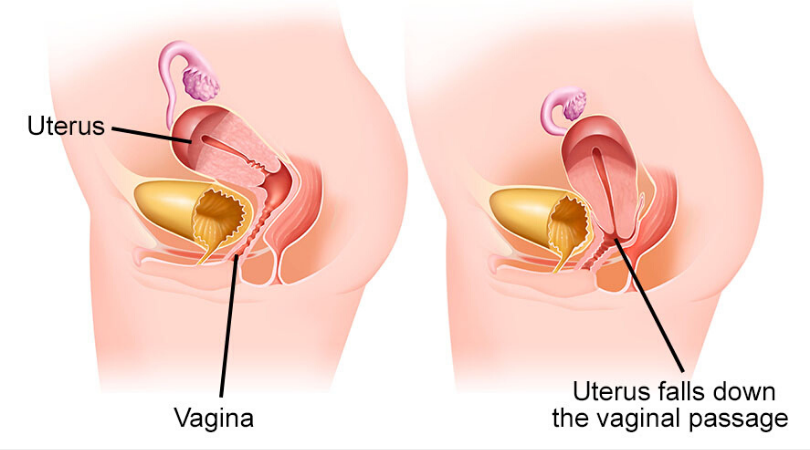What is UTERINE PROLAPSE?
The uterus is held in position by pelvic muscles and ligaments. If these muscles or ligaments become weak, they are not unable to support the uterus which causes uterine prolapse. Uterine prolapse occurs when the uterus falls from its normal position down into the vagina. We assure you of the best uterine prolapse treatment in Borivali.
Uterine prolapse may be completely incomplete. An incomplete prolapse occurs when the uterus only partly falls into the vagina. Complete uterine prolapse occurs when the uterus falls completely such that some tissue protrudes outside of the vagina.
Degrees of uterine prolapse
- First degree: The cervix drops into the vagina.
- Second degree: The cervix drops to the level just inside the opening of the vagina.
- Third degree: The cervix is outside the vagina.
- Fourth degree: The entire uterus is outside the vagina. This condition is also called procidentia
What are the symptoms of uterine prolapse?
Women who have a minor uterine prolapse may not have any symptoms. Moderate to severe prolapse may cause symptoms, such as:
- Fullness or pressure in your pelvis (feeling of sitting on a small ball)
- Feeling of something coming out from your vagina.
- Low back pain
- Constipation or difficulty passing stool
- Difficulty with urination
- Discomfort walking
- Painful sexual intercourse
- Vaginal bleeding
- Increased discharge
What are the risk factors for uterine propalse?
Following conditions can cause a prolapsed uterus:
- Multiple Vaginal deliveries
- Advancing age which causes Weakness in the pelvic muscles
- Loss of tissue tone due to lack of estrogen in menopause
- Conditions causing increased pressure in the abdomen such as chronic cough (with bronchitis and asthma), straining (constipation)
- Being obese with its additional strain on pelvic muscles
How is this uterine prolapse diagnosed?
Uterine prolapse can be diagnosed by evaluating your symptoms and performing a pelvic exam.
Your doctor may ask you to examine yourself in squatting to determine the degree of prolapse.
How is uterine prolapse treated?
Nonsurgical treatments :
Self-Care at Home
- Kegel exercises. They are done by tightening your pelvic muscles as if trying to stop the flow of urine. This exercise provides strength and tenacity to the pelvic diaphragm and provides some support.
- Losing weight to take excessive pressure off pelvic structures
- Avoiding heavy lifting
- Vaginal estrogen shows improvement in vaginal tissue regeneration and strength.
Surgical treatments
Uterine prolapse is often accompanied by rectocele or cystocele.
Reconstructive surgery repairs the pelvic floor and returns organs to their original position. Common surgical procedures done are
- Sacrospinous ligament fixation and uterosacral ligament suspension.
- Anterior and posterior colporrhaphy. The goal here is to make the structures that hold the pelvic organs in place tighter and stronger. Anterior repair is used when the bladder drops and presses against the vagina from the front. Posterior repair is used when the rectum drops and pushes the vagina from behind.
- Sacrocolpopexy and sacrohysteropexy
- Vaginal mesh repairs are done by putting mesh under the vaginal skin to help lift sagging organs into place.
Is there a way to prevent uterine prolapse?
Uterine prolapse may not be preventable every time. Few things that reduce your risk are
- Getting regular physical exercise
- Maintaining a healthy weight
- Practicing kegel exercises
- Treatment of chronic cough or constipation.
For treatment or further details, book an appointment with Dr. Deepika Doshi for uterine prolapse treatment in Borivali.

